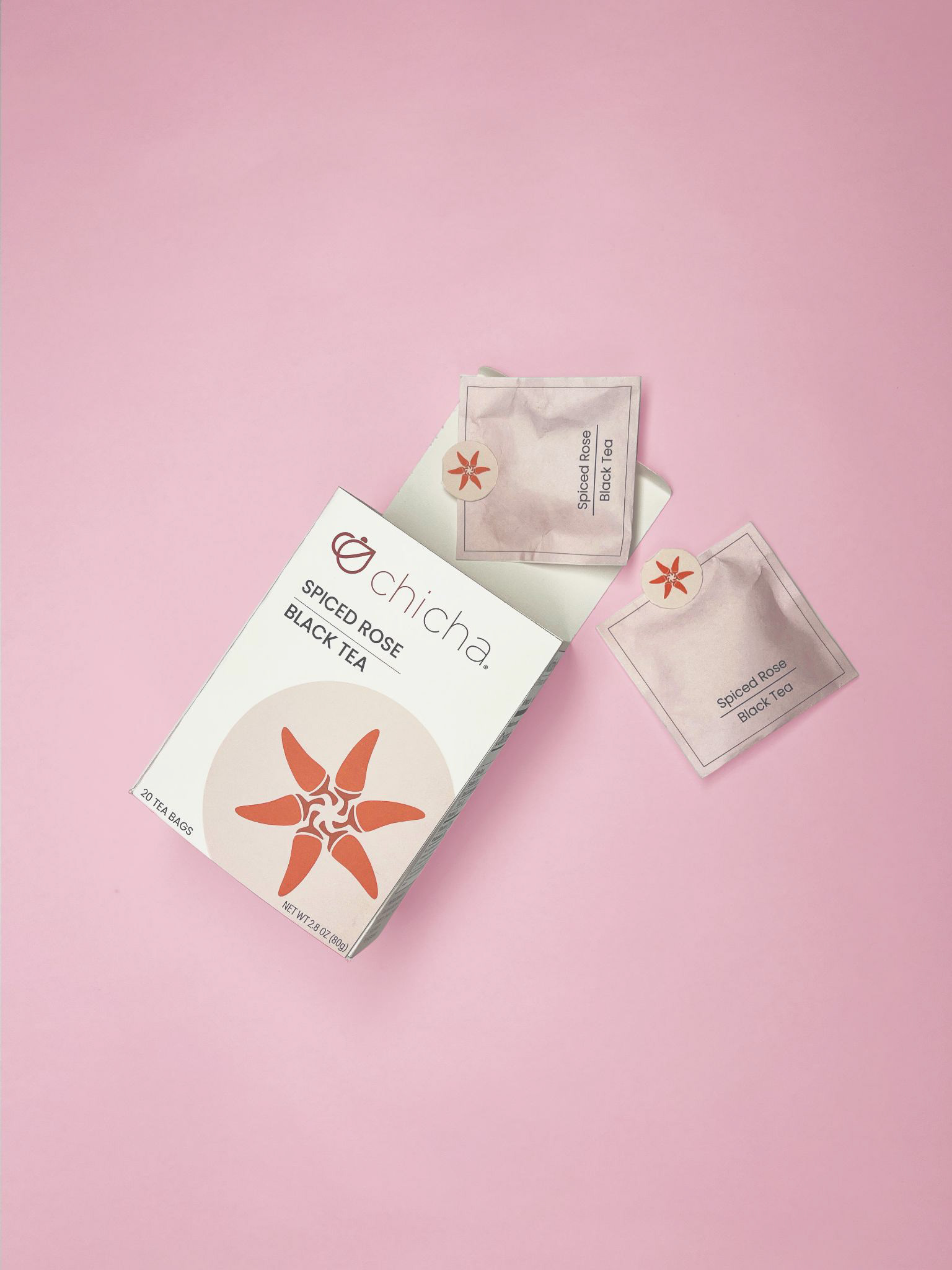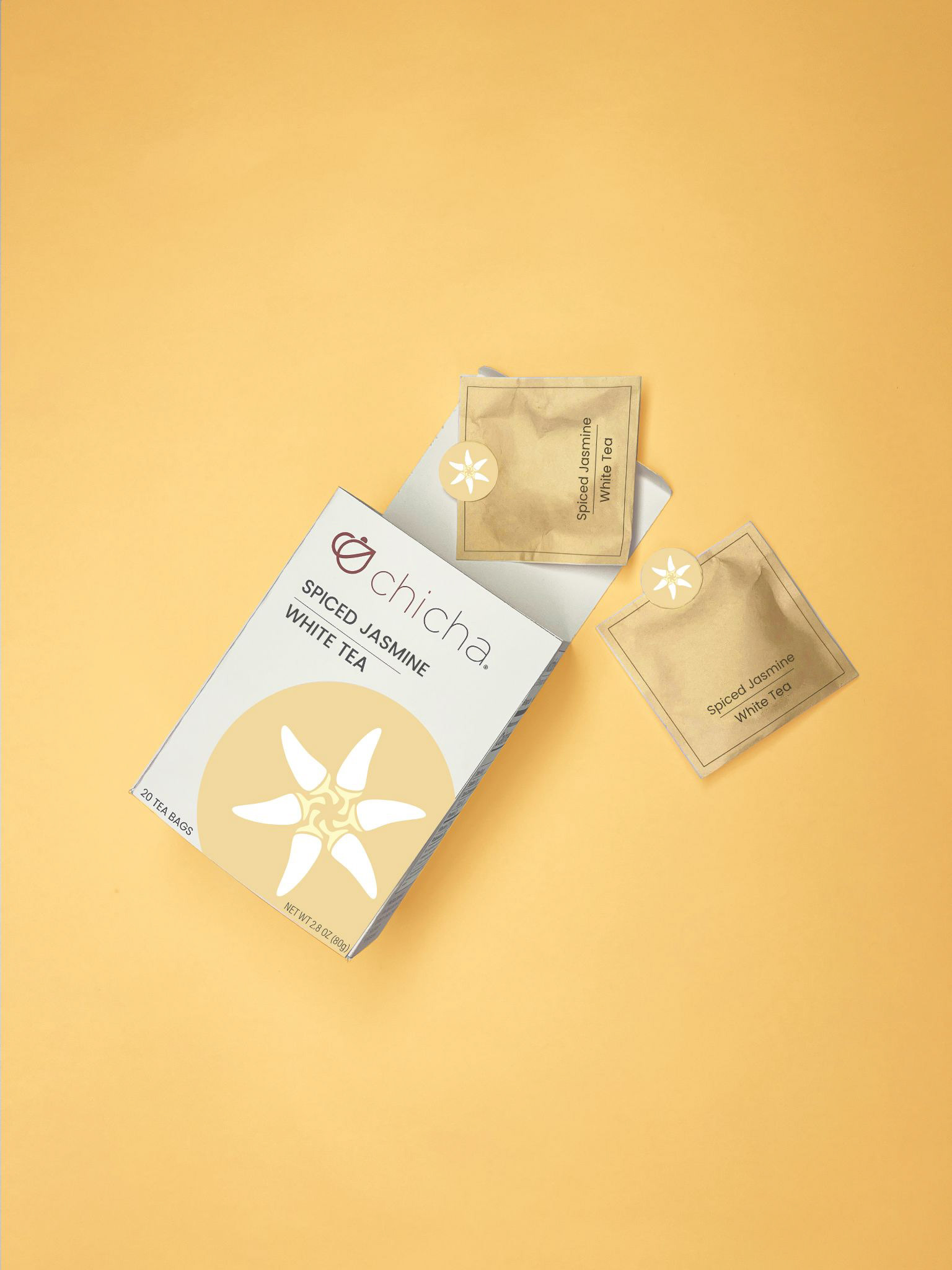2023
product design
This is my final project for RISD's Designing Food course. The project tasked me and two other students to identify an ingredient with unique properties and benefits, and create a new product utilizing the ingredient. Our group focused on the health benefits of the chili pepper to create a spiced floral tea blend.


01. Research
Our initial findings were categorized into biological properties and physiological properties. From a biological perspective, chili peppers are rich in capsaicin, a chemical compound which improves digestion and metabolism. Capsaicin also helps build up general immunity against infections and illnesses such as the common cold and flu. From a physiological perspective, the experience of spice releases endorphins in the human brain, and also gives a sense of controlled risk. Watching a few episodes of Hot Ones and identifying the breaking point of various celebrities' spice tolerances showed us that perceived spice is heavily influenced by flavor pairings (a sweet and spicy sauce is a lot more tolerable than a full-on blend of peppers).We conducted interviews and market research to find a potential opportunity. Interviews with local businesses taught us how various peppers are prepared in various and utilized in various ways, from Chengdu cuisine to citrusy taco seasoning. Our interviews with individuals revealed that people generally consume chili peppers in savory food. During our market research, we discovered a niche within the intersection of spicy foods which use real chili peppers and foods labeled as natural cold/flu remedies.
02. Exploration
Our research helped us gain a better idea of how we should experiment with chili peppers. Knowing that spice should be incorporated with other tastes, we tested how various types and forms of chili pepper tasted when baked into an egg tart. We also mixed the peppers into beverages with varying acid levels. Both methods of incorporation were able to make the spice of the peppers a lot more bearable.03. Prototyping
We then moved to our first round of prototyping, where each of us focused on a chili-infused sweet item. Between a spiced tea blend, spiced lemon cake, and spiced chocolate cookie, we decided to continue with the tea blend. Because our goal was to create a product which would be convenient for people with an on-the-go lifestyle, we knew the tea blend would be the best product to continue with during our second round of prototyping.
From the consumer feedback we gathered, we learned that the current spice level could still be lowered a bit in order to make it palatable to more people. Since our testing phase was in the middle of allergy season, we also confirmed our speculation that the spice of the peppers would help relieve an itchy throat. Following the prototyping and feedback, we were able to finalize our product statement: a sweet, healing drink that is easy to make and consume throughout the day.
03. Product Identity & Refinement
To better understand how to best market our product, we conducted a survey regarding potential brand ideas. Two of the most popular insights we found were that most people do not think about the health benefits when eating chilis, and that people would not buy a drink labeled with "spicy" or "chili". We also saw that 83% of the respondents had never eaten spicy food to help with a cold or allergy symptoms, which further confirmed this open market opportunity.With these survey insights in mind, we designed the package in a way which hints at the spiced aspect of the tea without explicitly stating chili. We decided on ChiCha as our brand name: Chi being short for chili and meaning “life force” in Chinese, and Cha meaning tea in Chinese and Korean.
